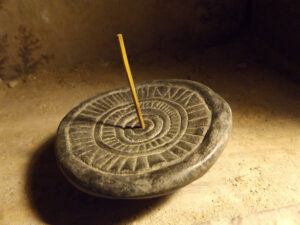CAIN’S HISTORY
Solluba
The Solluba, also known as the Sleb, Solubba and the Sulayb (Arabic: ُصلبة, صلیب ), were a Hutaym tribal group in the northern part of the Arabian Peninsula who were clearly distinguishable from the Arabs. Due to social stigma, very few people openly identify as Ṣulayb today.
Origin
The Solluba have been identified with the Selappayu in Akkadian records, and a clue to their origin is their use of desert kites and game traps, first appearing in archaeological records around 7000 BC. Cambridge linguist and anthropologist Roger Blench sees the Solluba as the last survivors of Palaeolithic hunters and salt-traders who once dominated Arabia. They were the peoples who assimilated in the next wave of humans consisting of cattle herders in the 6th millennium BC. These people introduced cows, wild donkeys, sheep and dogs, wild camels and goats. They may have engaged in trade across the Red Sea with speakers of Cushitic languages or Nilo-Saharan languages. In the 3rd and 2nd millennium BC speakers of Semitic languages arrived from the Near East and marginalized and absorbed the rest.
Western travellers reported that the Bedouin did not consider the Solluba to be descendants of Qaḥṭān. One legend mentions that they originated from ancient Christian groups, possibly Crusaders who were taken into slavery by the Bedouin. Werner Caskel criticizes the Crusader origin theory and proposes that the term “Solluba” describes a host of groups hailing from different backgrounds. Caskel proposes the Solluba to be those of al-Ḥasā being of 12th- to 13th-century AD migrants from southern Persia, He also believes the Solluba to be the group composed of communities emerging after their defeat by the Wahhabis.
Society
The Solluba were reported, by western travelers, as having different physical features other than other Arabs, often with fairer eyes and hair. They also spoke a distinct variety of Arabic that contained several words exclusive to their dialect.The Bedouin usually differentiated between the Solluba and other Hutaymi groups. Unlike the Hutaymis, the Solluba were independent and did not require protection from the Bedouin. The Arab Bedouin despised the Solluba and counted them as men of no honor and thus inferior to them. Their deep knowledge of the desert however earned them the title Abu al-Khala (Fathers of the empty spaces–Fathers of Chaos).
The Solluba followed occupations such as carpentry, metallurgy, and leather-working. They were also known as fortune-tellers and magicians, as well as musicians and poets. The Bedouin valued their knowledge of the desert, often hiring them as scouts, and depended on them to heal their animals. Despite their dependence on the Solluba, the Bedouin did not appreciate them and often looked down upon them. Unlike other nomadic Hutaymi and Bedouin groups,the Solluba did not engage in plundering and were in turn viewed as neutrals and often spared when raids took place. Despite their low status, their hospitality was accepted, especially when a warrior was sick or wounded as they were famed as healers.
During spring the Solluba lived close to Bedouin settlements and lived off the milk of their cattle. In summer they trekked deep in the desert accompanied only by their wild asses and lived on hunting. The Solluba owned certain slopes and valleys in the desert and young men gave portions of their territory as dowry to the family of brides to hunt on.
Most Solluba disregard Islam. They seem to have retained some of their traditional beliefs. They worship the boulder al-Weli Abu Ruzuma, located in the Syrian Desert. Their emblem, which was shown at ceremonial festivities, was a cross wrapped with a dress. Generally, they were seen as Kafir (non-Muslims) and suffered Wahhabi raids, with a notorious massacre in the ʿAr valley.
Robert Graves, ‘the great pagan poet’ – as some refer to, gives better history to the Sollubu or “Slab” history. Robert’s piece on the Slab gives us this nearly lost history by telling us that “Cain’s “Brand” was the cruciform or *skin gouging/ etching into the human flesh*. This cruciform was worn as a tribal mark on the brow by the KENITES (Canaanites), or “descendants of Cain”. The Sollubu or Slab were and are a vagabond tribe of METAL-WORKERS, shepherds and musicians whose successors are the present day Slab….The Slab wear the same cruciform as ‘their mark’ since ca. 6 millennia ago. Is it a wonder that is Cain’s name?





